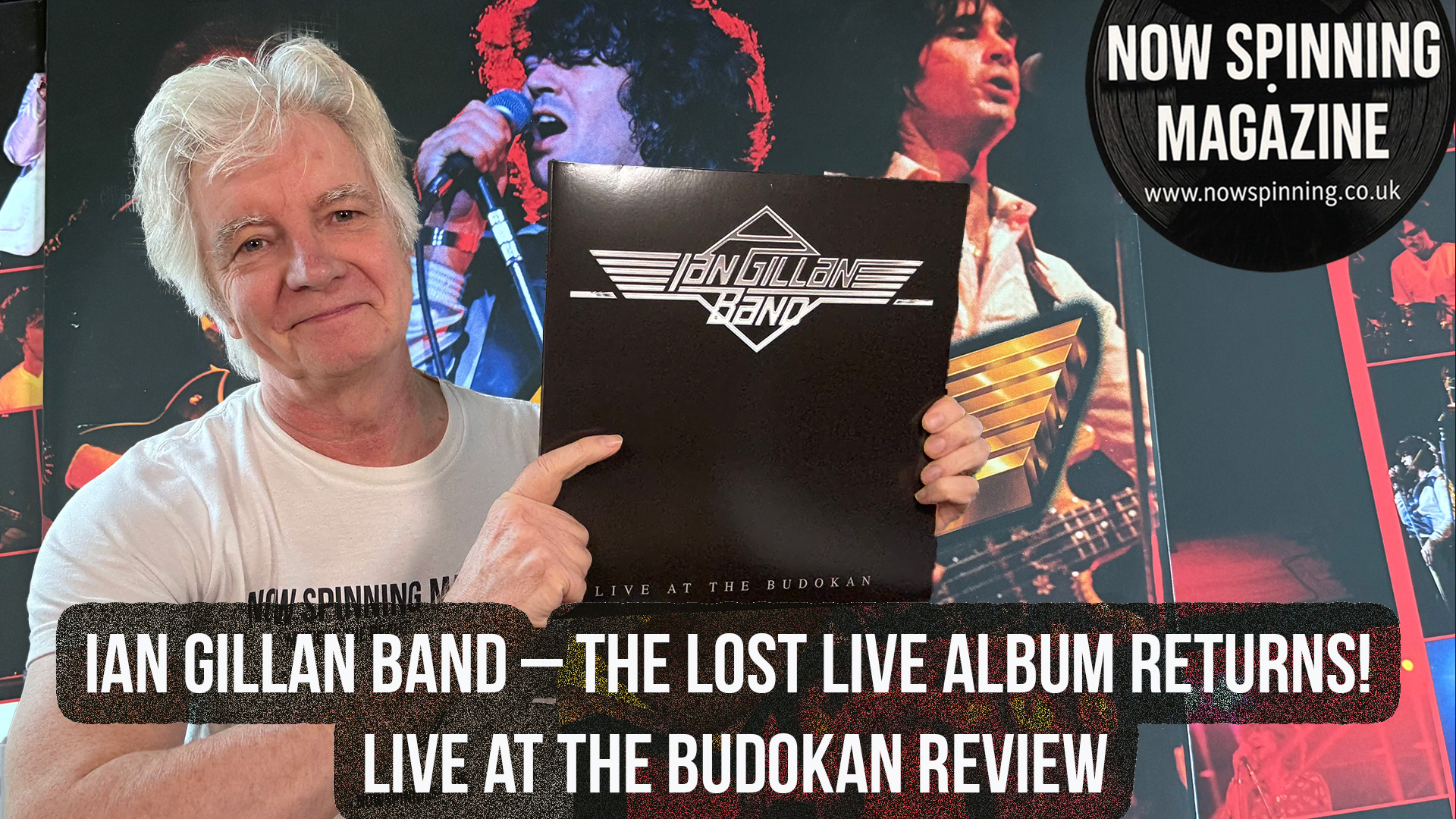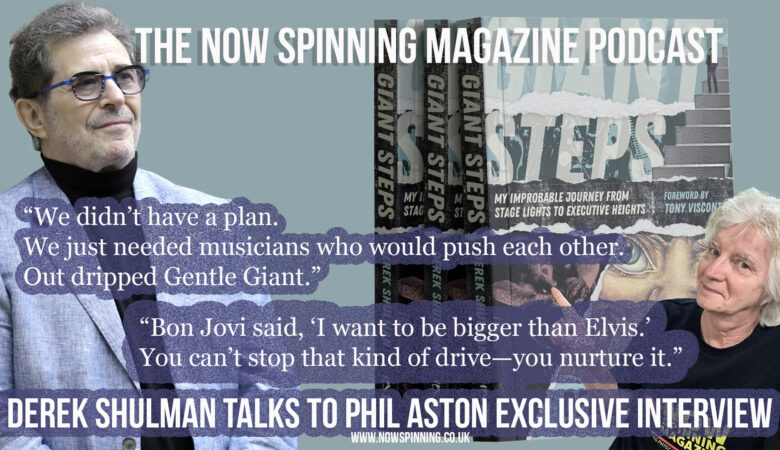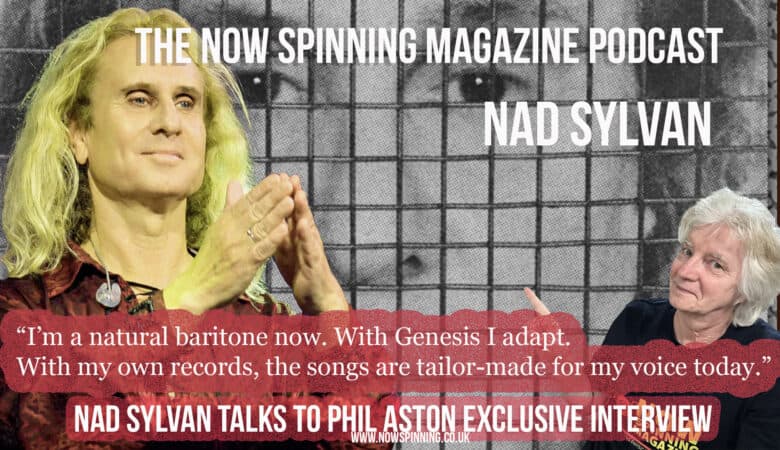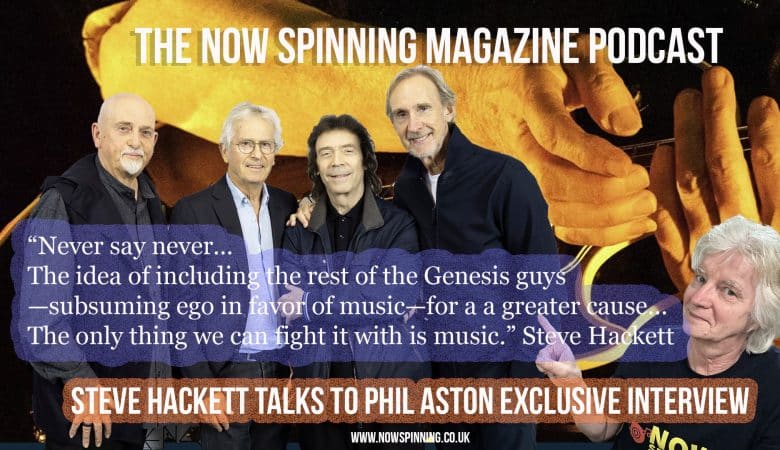Peter Hammill on Voice, Vision & Vulnerability: Inside The Charisma & Virgin Recordings 1971–1986
I was thrilled to welcome Peter Hammill to the Now Spinning Magazine Podcast — an artist whose work has always felt fearless, intimate, and utterly singular. Best known as the founder and frontman of Van der Graaf Generator, Peter has also carved a remarkable solo path — a body of work that explores love, fear, loss, mortality, and self-reflection, often within the same song.
That journey is celebrated in a major new release:
Peter Hammill – The Charisma & Virgin Recordings 1971–1986
18 CDs + 2 Blu-rays covering 13 solo albums, newly remastered from the original tapes, with new 5.1 and stereo mixes of The Future Now and pH7 by Stephen W. Tayler, rare BBC sessions and live recordings, a Blu-ray of previously unreleased European TV performances, and a 76-page hardback book featuring Peter’s reflections on each album.
It’s a perfect companion to the earlier Van der Graaf Generator box — and, as Peter suggests here, it might not be the end of the story.
Highlights from our conversation
“It wasn’t up to me — but I hoped it would happen.”
Although this set feels like the natural twin to the Van der Graaf Generator box, Peter is candid that the decision ultimately sat with the rights holders. Encouraging results from the band box helped pave the way for this solo anthology.
Listening back after 50 years
Peter immersed himself in new masters and new mixes, offering guidance where needed (“that buried backing vocal could come up a touch…”). He revisited each album to write the book notes and found the process oddly moving and historical — not just a diary of his career, but a snapshot of what was happening in recording culture as home studios emerged.
Home recording as survival — and liberation
Long before it was commonplace, Peter embraced four-track home recording. It was partly a practical hedge (“I can keep making music even if the industry moves on”) and partly artistic freedom: without the pressure of expensive studio time, a different kind of music could unfold.
The 5.1 & new stereo mixes: The Future Now and pH7
These two albums were chosen simply because their multitracks survived. Peter doesn’t own a 5.1 system, so he went to hear the surround mixes and gave iterative feedback on the evolving stereo versions. His verdict: definite improvements, with the originals preserved as historical artefacts — the best of both worlds.
The book
Having Peter author the liner essays brings the set alive. He’s honest where memory fails (“I don’t remember these demos!”), and generous in contextualising each period — a real bridge between listener and artist that many reissues lack.
The voice: chorister roots, dramatic intent, and continuous evolution
Peter’s voice remains one of rock’s great outliers: intimate one moment, volcanic the next. Did the chorister years help? They gave him an ear, not notation (“I still don’t read music”). He wanted to sing in English, not American, and leaned into a dramatic, experimental delivery. Influences? Howlin’ Wolf, soul singers — but once you begin, he says, you must forge your own trail. Today, he often sings more quietly — discovering how restraint can cut deeper than volume.
Influence, independence, and bloody-mindedness
From David Bowie to post-punk icons, many cite Hammill. He suspects the common thread isn’t just musical style but bloody-minded determination — staying on your path without swerving for trends.
Van der Graaf vs solo — and the late-’70s pivot
Early on, lighter songs fed Fool’s Mate while the band pursued heavier terrain. After the 1978 split, Peter’s solo work accelerated. With punk rumbling, he felt a responsibility to do something different, leading to the stark, left-field textures of The Future Now and pH7 — records that have aged beautifully precisely because they refused fashion.
Mortality & meaning
Hammill has long written about time and fragility. After his 2004 heart attack, that lens sharpened — most directly on Singularity. There’s the heightened awareness that follows a scare, then the human tendency to drift back into feeling immortal. The themes remain, but he resists pure confession: some songs are personal; others are crafted writing.
We bonded over the importance of books, essays, and long-form listening. Streaming’s skip-happy culture often kills the slow-build intro; physical sets like this encourage deeper attention — and let new listeners discover the artist with the artist’s own notes in hand.
Will there be a follow-up box for the later years?
Peter has transferred a large portion of his catalogue to Cherry Red, making a future companion set covering the post-’80s/’90s years very possible. For now, he’s returning to recording; live dates will come in clumps as and when.
Where should newcomers start?
Peter’s suggested doorway: Nadir’s Big Chance — “simpler songs with plenty of spikes.” He adds, with a grin, don’t start with In Camera if you’re brand new (“ten minutes of musique concrète…”).
Phil Aston | Now Spinning Magazine










